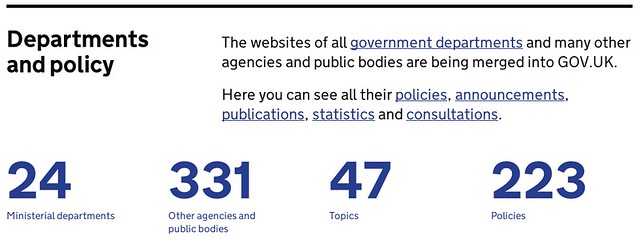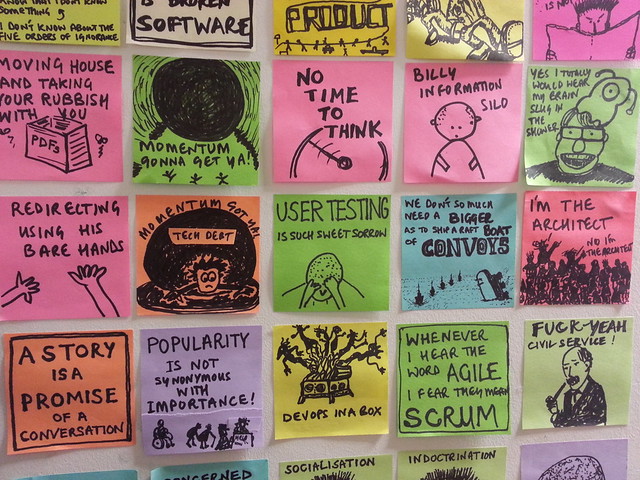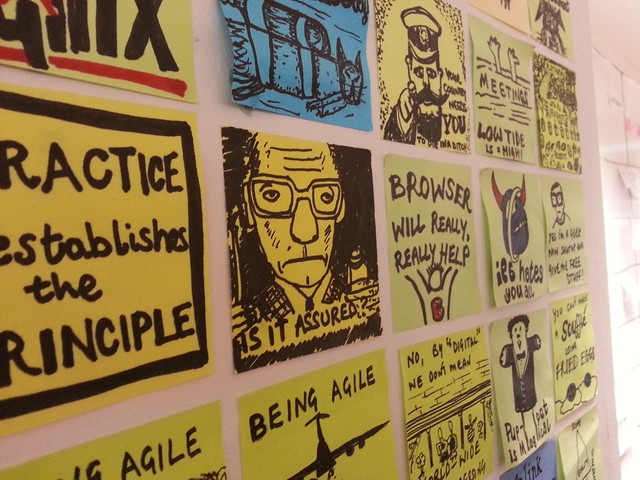Earlier this week, Matt kindly gave us a tour through the UK’s Government Digital Services (GDS for short) offices. GDS is, as the name suggest, the department that is tasked with running the government’s digital services. Among these, and that’s why we went, it’s the team behind the fantastic new gov.uk, a smart new interdepartmental and most importantly user-centric site that serves as one stop shop for UK citizens looking for any services the government might offer.
Gov.uk is particularly interesting to me not so much because it’s a central service, but their mission and how they operate. In a nutshell (and I hope I don’t misrepresent anything now), it’s the manifestation of the UK’s digital strategy:
“This strategy sets out how the government will become digital by default. It fulfills the commitment we made in the Civil Service Reform Plan.
By digital by default, we mean digital services that are so straightforward and convenient that all those who can use them will choose to do so whilst those who can’t are not excluded.”
To do that, the GDS hired a kick-ass team of developers, designers and writers that apply their experience to shake up some of the crusty structures of traditional government operations. Think agile development, user-centric design, human-readable copy on government websites. All the stuff that startups and software companies work with every day, but applied to the behemoth that is a government IT infrastructure.
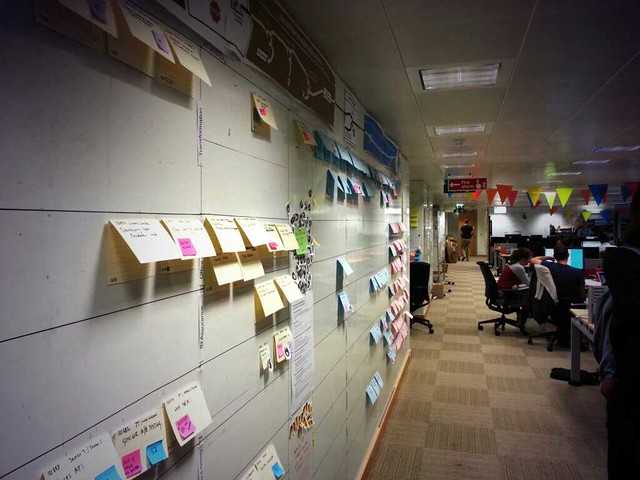 One of the many scrum-style walls at GDS.
One of the many scrum-style walls at GDS.
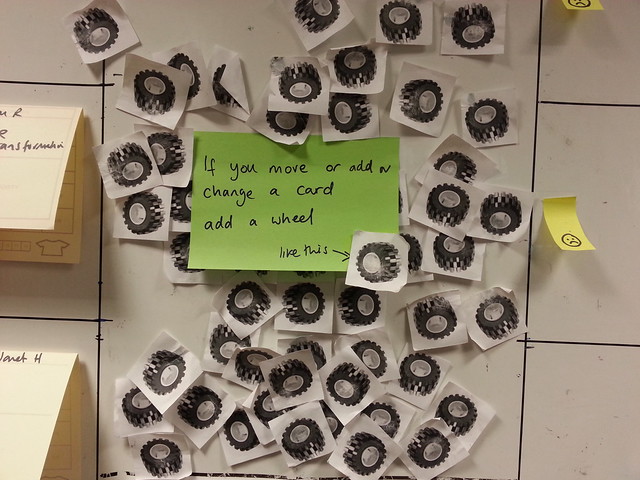 Any trick that helps visualize progress across large teams helps.
Any trick that helps visualize progress across large teams helps.
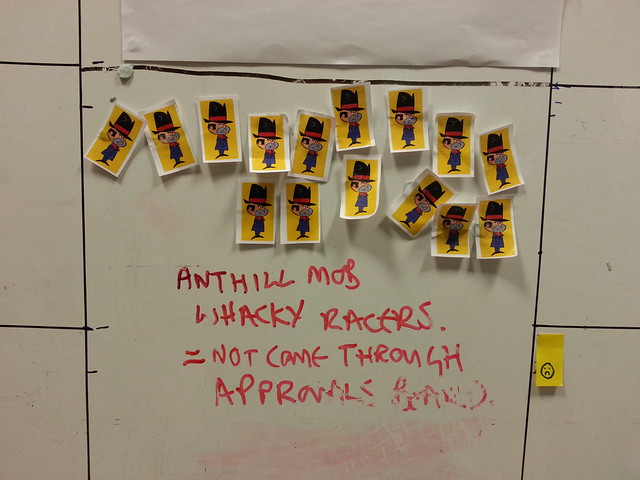 Any office is better with an Anthill Mob Whack Racer, no?
Any office is better with an Anthill Mob Whack Racer, no?
The fact alone that the government can attract such a team (including Russell, Chris, Matt and many others) is noteworthy. Keep in mind that all these people could pretty much work wherever they choose, and traditionally the government isn’t the kind of employer where the more playful and innovation-minded are natural fits. So this shows us a drastic shift in the work culture, and smart hiring decisions. Also, I hope that it marks a shift that more geeks and designers realize that there’s an opportunity to really have a positive impact on millions of lives if you work with the leverage of a government – if only the structures allow for it and don’t turn you off too badly. After all, we see a similar mutual embrace starting in the US around Code For America, the White House Innovation Fellows, etc.
Learning #1: The government needs to embrace the innovators from the private sector and allow for structures that attracts top talent rather than just administrators. In Germany, we have a long way to go in this respect.
Then there’s a larger cultural shift that GDS promotes and fosters. A shift away from monthly reports to live status dashboards, from closed to open data, from 1.0 releases to 0.1 releases (as in agile development), from top down to bottom up. This very much requires a change of mindset and work culture, and of accepting transparency and openness in ways that before were considered highly problematic. It turns administration upside down. Starting at the GDS headquarters, the positive equivalent of trojan horse pilot projects are sent off into all branches of government – ideas spreading to change the way departments work and interact both internally, between departments, and with their constituents.
Learning #2: We need a shift in culture and the way governmental departments work and think of themselves, towards transparency, openness, and accepting public failures as well as successes.
 Lots of playful elements in the office show the open, collaborative culture that emerges in well-functioning, energetic teams.
Lots of playful elements in the office show the open, collaborative culture that emerges in well-functioning, energetic teams.
This all also means a certain need for more empowerment and autonomy for decision makers. Where live data is available and agile development allows for quicker user/citizen feedback (aka learning along the way), administrators will have to make more decisions on the fly. That’s a good thing. If projects are broken up into smaller chunks, the risk of failure is lowered along with the required budgets and potential impacts of these new, smaller chunks.
Learning #3: These new structures empower administrators. That’s a good thing.
Learning #4: Just like decision making becomes more agile and administrators are more empowered in the process, procurement needs to follow the same principles of smaller, quicker purchases. This leads to cost savings and opens the door for innovative solutions, reduces overhead and risk, and levels the playing field for smaller local vendors to participate in the bidding processes.
And while the institutional changes are important and interesting to watch, let’s not forget who profits most from all of this: Citizens will be able to find much more easily all the information and services they need, which is a huge empowerment in itself. Rather than digital services representing the structure of departmental structures, services are now built around citizens’ needs, which is the way it should be.
Learning #5: Governments exist to serve their citizens. Rather than just replicating the government’s organizational structures, digital services should primarily aim to serve government services to their citizens and stakeholders.
Edit: As James Weiner rightly points out, it’s not like we’ll need to bring in all the skills and knowledge from the outside either – civil servants know best about what needs changing and how, and they just need the space and support to do so. So it’s about empowering the civil servants as much as it is about building new teams.
Which brings us to learning #6: find and empower the civil servants wherever you can. Thanks, James!
None of this is magic. Rather, it is — or should be! — common sense by 21st century standards. Still, I found it mind-blowing to see it work the way it does at GDS. We’ll need to take a very close look at how we can learn from these examples in the UK and the US and apply those learnings in Germany and across Europe. There’s lots to be learned, and little to be lost.
The potential cost of change and failure is much lower than the certain cost of inertia. In other words, there’s little to be lost and lots to be gained. Politicians, step up and give us some top level support – then we can work out the next steps together.
